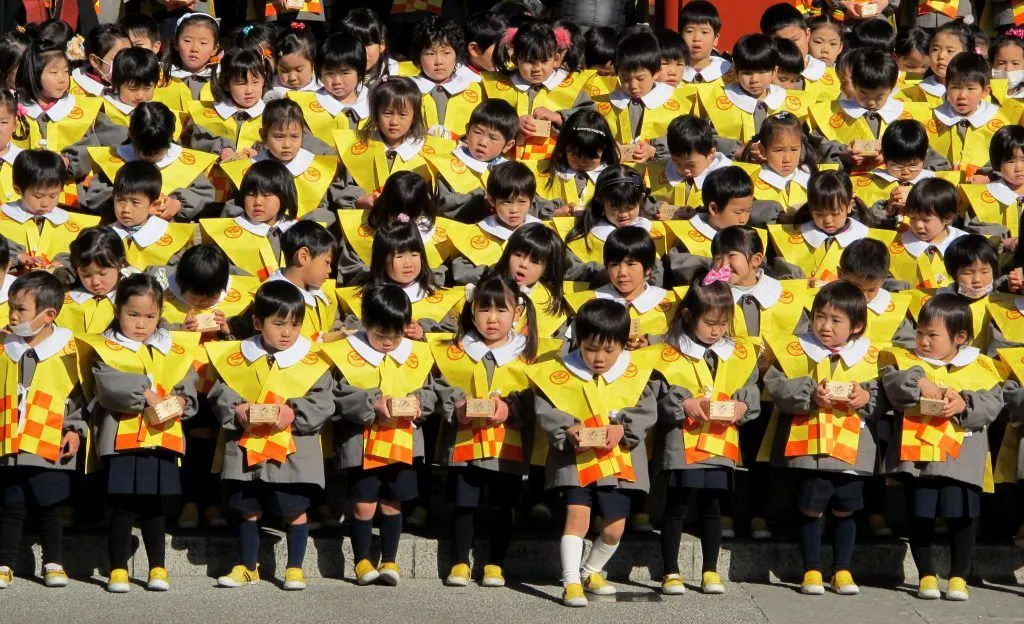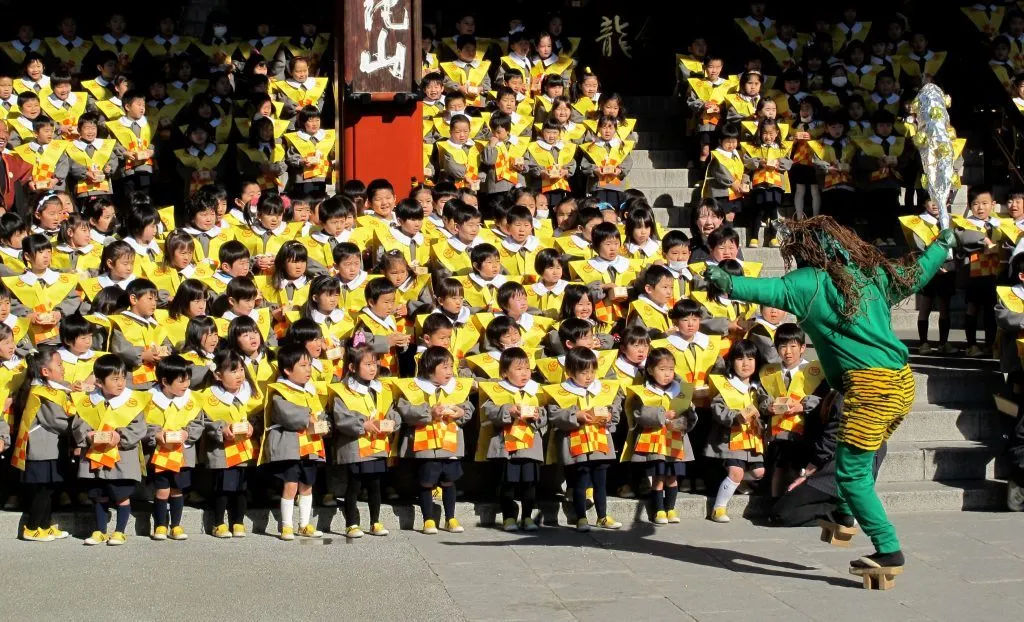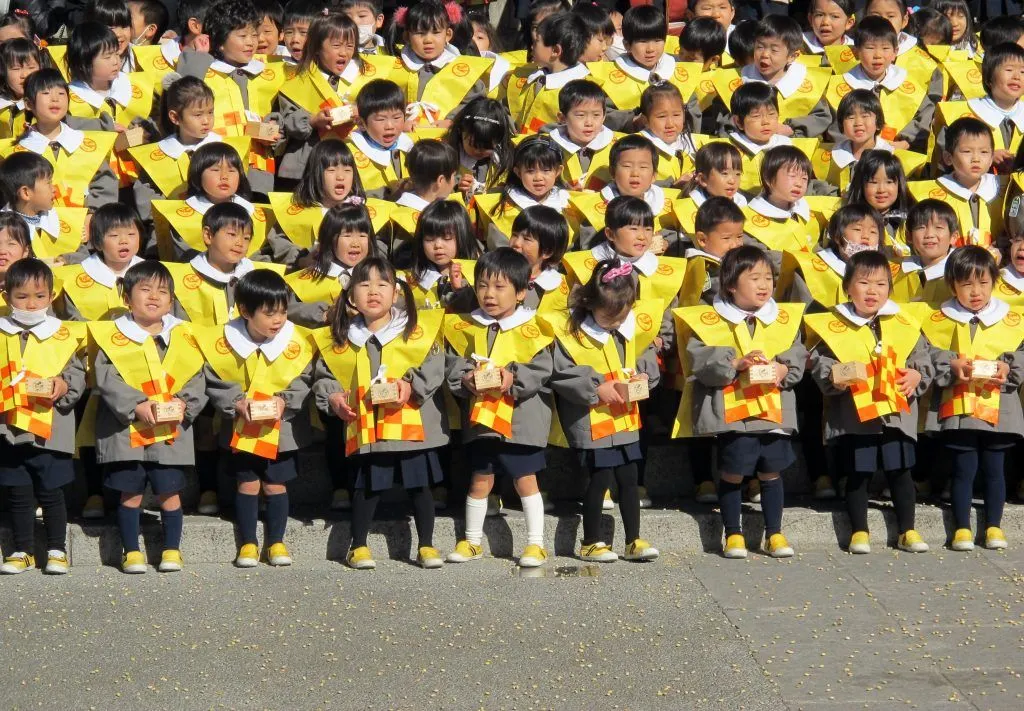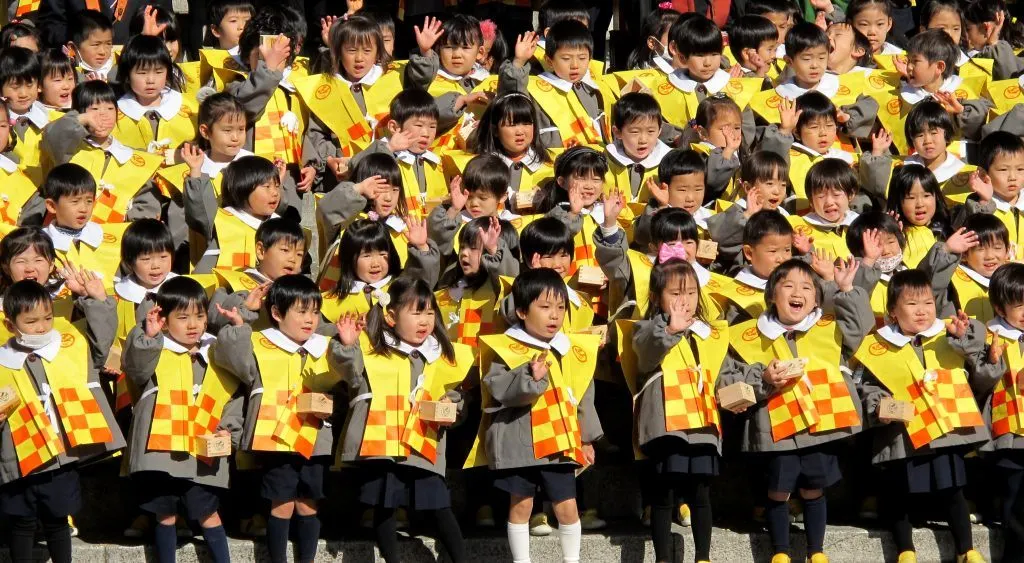Literally meaning the “seasonal division”, Setsubun (節分) is an important Japanese celebration associated with the changing of seasons. Setsubun is traditionally celebrated on the day before the beginning of spring according to the lunar calendar (now fixed to February 3rd as part of the Haru Matsuri or Spring Festival).
While it has been marked in many ways across the centuries, nowadays the most common Setsubun ritual is mamemaki or bean-throwing, in which people throw roasted soy beans from their homes and temples and shrines throughout the country while shouting, “Oni wa soto, fuku wa uchi!” (Demons out, good luck in!). It is believed this act will ward off evil spirits for the coming year. Eating the number of soy beans corresponding to your age is considered especially lucky. Some also believe eating one extra will bring even more good fortune.
Often someone will dress up as a demon (usually by way of a mask) to visually represent the ritualistic driving out of bad spirits. This is a job given to many dads across the country who are often pelted with beans by their kids after coming home from the office. Once they have been “driven out”, they re-enter the house, mask off, to enjoy the rest of the evening with their families.
On the evening of Setsubun, it is customary in the Kansai region to eat an uncut makizushi roll known as eho-maki (“lucky direction roll”). However, it is also becoming increasingly popular in the Kanto region thanks to excellent marketing by convenience stores and supermarkets. This special sushi roll is made with seven fillings corresponding to the Seven Deities of Good Fortune called Shichifukujin. The ingredients used represent good health, happiness and prosperity, while rolling them up is also said to be lucky.
Eho-maki should not be cut into bite-size pieces as this would mean cutting your good fortune. For your wish to come true, it should be eaten in its entirety in silence while facing the good fortune direction of the year. The lucky direction for 2017 is north-north-west, 2018 is south-south-east and 2019 is east-north-east.
Both roasted soy beans and eho-maki can be bought readily these days from supermarkets and convenience stores. In the lead up to and on Setsubun itself, you’ll find the roasted soy beans right by the entrance or registers. They usually come with a complimentary demon mask so you can have your own bean-throwing fun.
You can pre-order eho-maki from some convenience stores (7/11 for sure), supermarkets and sushi restaurants. There is usually a cut-off for orders, sometimes up to a week before, so be sure to be organized. That said, with eho-maki’s growing popularity, it is becoming increasingly easy to just walk in and buy one off the shelf on the day, especially if you go earlier on.
Read more about Setsubun food traditions and customs.
Below are some pictures from Setsubun celebrations at Sensōji Temple in Asakusa, Tokyo. At around 10am, local kindergarten children usually grace the steps of the temple to sing and participate in mamemaki.
Have you seen or participated in any Setsubun celebrations? Are there any rituals like this to bring good fortune in your country/culture?







kaorisquarefeet
Wednesday 8th of February 2017
I've only been to one Setsubun bean throwing event at a local shrine, but they were just throwing regular peanuts ;D
Jessica Korteman
Friday 10th of February 2017
Really? Haha Were they peanuts in the shell? If so, it's probably for hygiene and non-waste reasons so people can pick up and eat the ones that inevitably end up on the ground. I've seen soy beans being thrown in small bags too for the same reason.
Les Petits Pas de Juls
Saturday 4th of February 2017
The kids are so cute!!!! First time ever I hear about this celebration. It's always so interesting to find out about such traditions and see how very popular and followed they are. That fortune sushi roll looks delicious on top of bringing good luck! You just made me more craving for those! ;-) Enjoy the celebrations! Thanks again for sharing and taking us inside them too. Jul'
Jessica Korteman
Friday 10th of February 2017
Thanks, Jul'! It is a very interesting celebration and one that is easy to get involved in even as a visitor. And I don't think anyone is complaining about having to eat sushi rolls! ;)
Guidefest
Tuesday 27th of September 2016
Ahahah!!! Throwing beans to chase demons, we can only see that in Japan! ;)
Jessica Korteman
Friday 10th of February 2017
Yes, it is pretty unique! :)
Jessica Korteman
Saturday 25th of January 2014
The lucky direction for 2014 is east-north-east.
Jessica Korteman
Monday 28th of January 2013
The lucky direction for 2013 is south-south-east.